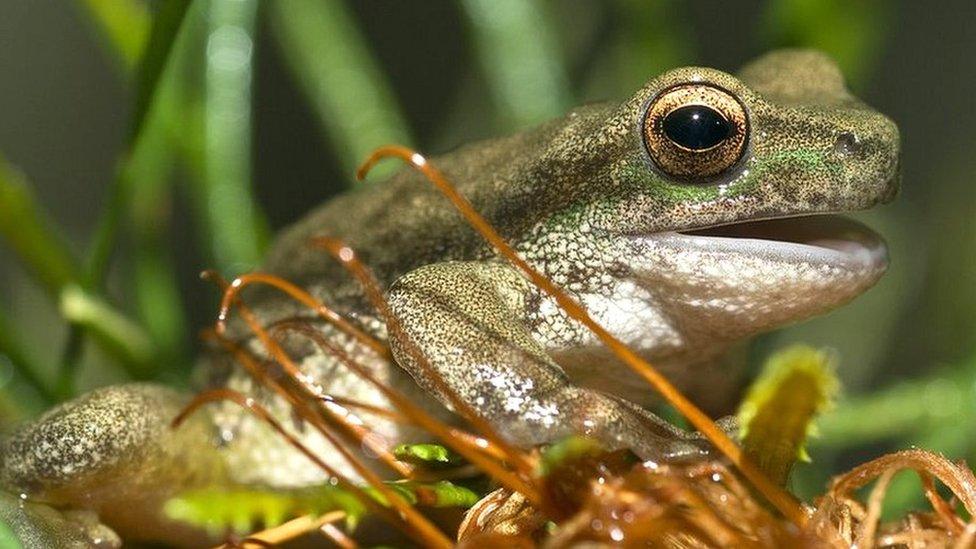Young frogs camouflage themselves as poo, according to new study
- Published
- comments
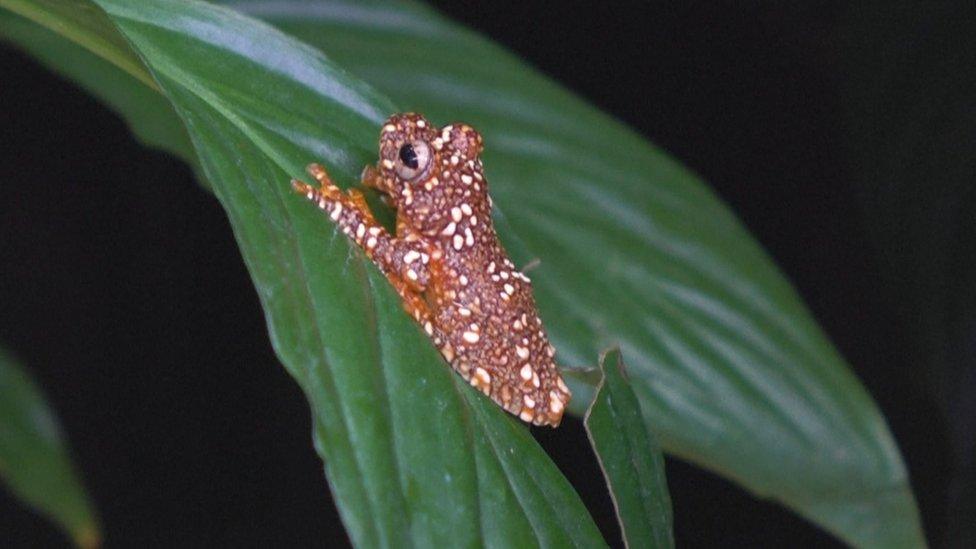
Young Wallace's flying frogs are bright red with small white dots
Surviving out in the wild is a difficult task for lots of species, and one type of frog has a rather unique way of keeping potential predators at bay.
The young offspring of Wallace's flying frogs, which are reddish brown with small white dots, have an "unusual colour pattern".
Experts believe the amphibians use this to camouflage themselves "as animal droppings" to escape animals which want to eat them, according to a new study.
A team of researchers studying the frogs, which are native to Southeast Asia, made the discovery thanks to an experiment at Schoenbrunn Zoo in Austria's capital.
"The young frogs probably count on the fact that they will be seen but considered something inedible," University of Vienna researcher Susanne Stueckler said.
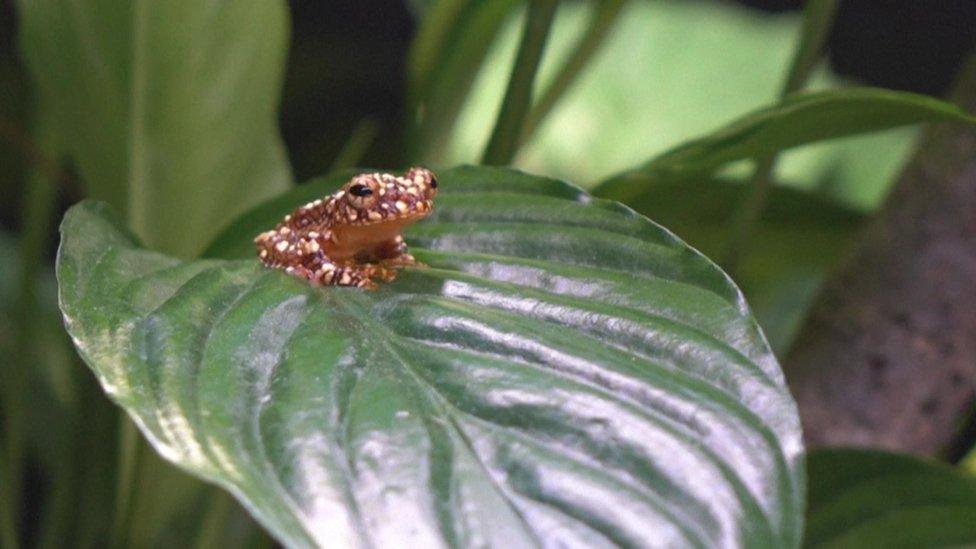
The young frogs' colour can make them targets for predators
To test their theory that the frogs were trying to escape predators, the researchers created differently coloured wax frog models and placed them in the zoo's rainforest house.
The house "contains a range of bird predators that are known to use colour vision to detect frogs as prey", the study says.
It found the attack rate was significantly greater for red Wallace's flying frogs than for green ones. However, this was reduced by half when red models had white spots.
Some Wallace's flying frogs, which are also known as gliding frogs, can travel up to an impressive 16 metres from tree to tree. It's all thanks to the webbing between their toes and their large toe pads.
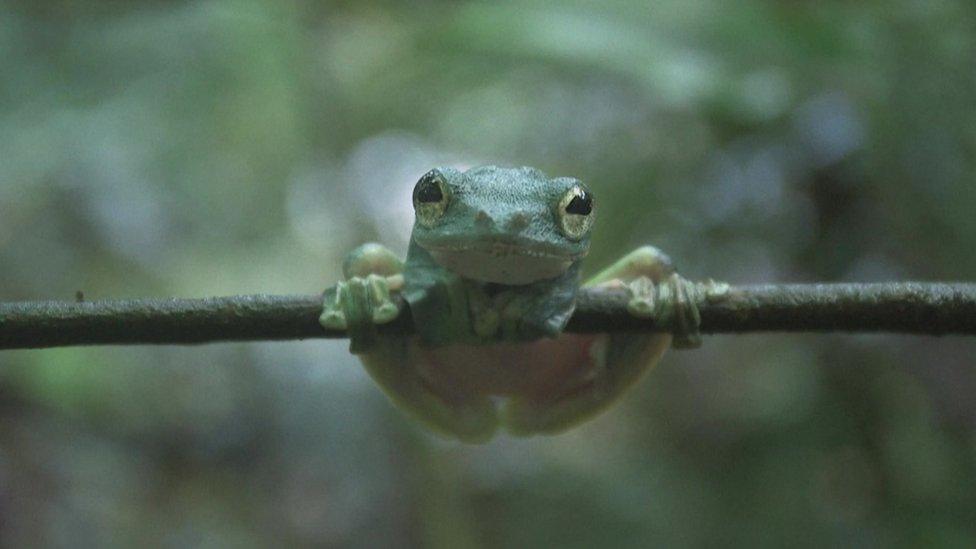
Adult Wallace's flying frogs are bright green in colour
"We show that the unusual colour pattern of juveniles likely functions as a masquerade of animal droppings," the researchers said.
"(It may) function as anti-predator strategy... so that predators misidentified them as inedible objects.
"To our knowledge, this is the first experimental exploration of a vertebrate masquerading as animal droppings."
The frogs' spots eventually disappear after one year when the amphibians mature into adults and become a shiny green colour.
- Published1 March 2022

- Published27 December 2022
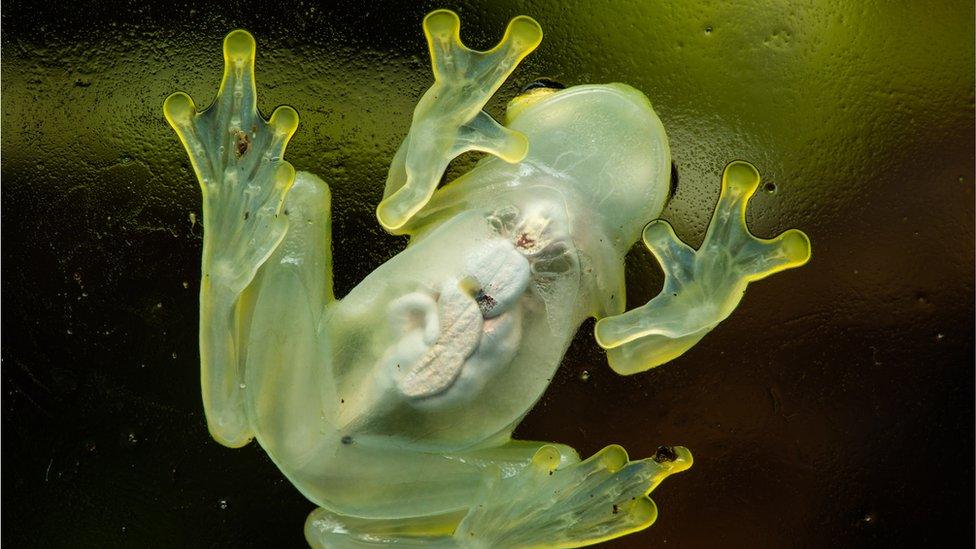
- Published19 April 2022
